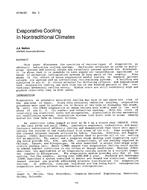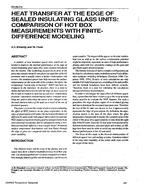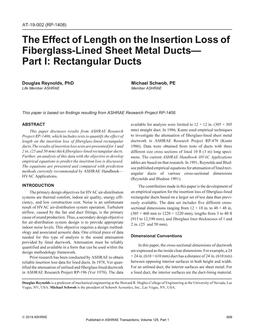Click here to purchase
We tested the performance of a radiant wall system that involves pipes attached to a thermally insulating core made of aerated concrete. The potential benefits of such a system include the possibility of operation as cooling in summer and heating in winter, easy installation in new as well as existing buildings, minor space requirements, and eliminating the need to reduce the story height when installed in existing buildings. Laboratory measurements of a wall fragment located between two climate chambers have been performed under design boundary conditions to measure the wall surface temperature and output in heating and cooling mode. A hotbox attached to the inner wall surface allowed precise control of the test conditions. The fragment consisted of the concrete core insulated from the exterior by a layer of thermal insulation and a densely spaced pipe register attached to the core and located in a plaster. The response curves indicated a fast thermal response of the wall system. With realistic air velocities at the wall surface, the heat flux per m2 of the active surface and 1 K of the temperature difference between water and room air was 5.1 W/(m2.K) in heating and 4.8 W/(m2.K) in cooling mode. The results suggest that a relatively large area of the active surface may be needed under peak cooling conditions due to the limited permissible range of surface temperatures. However, under heating conditions, the calculations indicated that the active surface area needed at the heating load of 0.8 kW was only 8 m2 assuming a well-insulated room under severe climatic conditions.
Citation: 2021 Virtual Conference Papers
Product Details
- Published:
- 2021
- Number of Pages:
- 9
- Units of Measure:
- Dual
- File Size:
- 1 file , 2.8 MB
- Product Code(s):
- D-VC-21-C067


